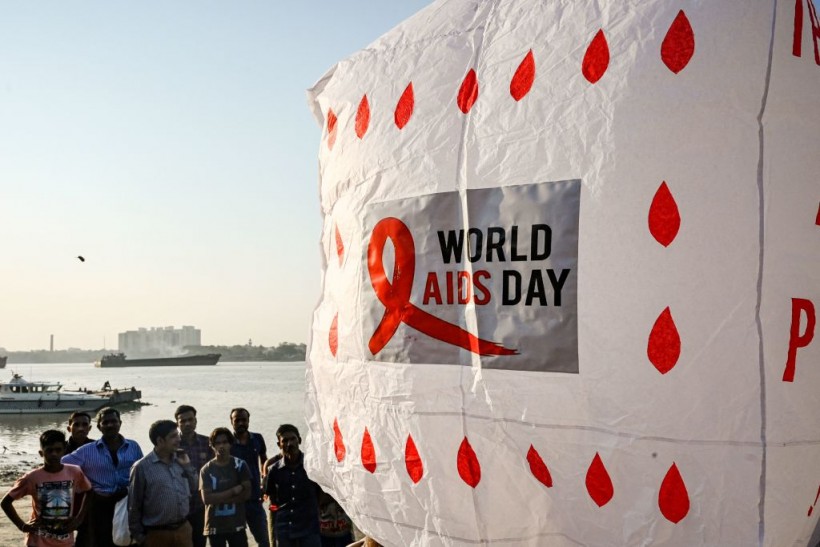World AIDS Day is commemorated every year on December 1, wherein people around the world unite to show support for people infected with HIV and remember those who have lost their lives to AIDS. UNAIDS is urging every people to address inequalities that hold back the progress in ending the HIV/AIDS epidemic, especially as this year's theme is "Equalize."
The slogan is a call to action, a prompt for all people around the world to work for the proven practical actions necessary in addressing inequalities and helping end AIDS.

Social activists prepare to release a traditional hot air balloon to create awareness about HIV AIDS on the eve of World AIDS Day in Kolkata on November 30, 2022.
World AIDS Day 2022: Equalize
In the past two years of the COVID-19 pandemic and other global health crises, UNAIDS data showed that the global HIV response has faltered, resources shrunk and millions of lives are at risk.
The World Health Organization (WHO) joins member states across the world to highlight the urgent need for everyone to be provided access to quality HIV HIV prevention, testing, treatment, and care to end HIV/AIDS as a public threat by 2030.
The UN health agency noted that there are a lot of people and populations to reach to achieve their goal. These groups include new HIV infections in populations of sex workers, people who inject drugs, men who have sex with men, and transgender people. Sadly, only 22% of young people have knowledge about HIV prevention, and access to innovations remains highly uneven.
WHO calls for action in several areas. First, policymakers and program managers to improve the availability and access to quality and sustainable HIV services. Secondly, political leaders and key influences reform laws, policies, and practices that facilitate discrimination, stigma, and exclusion.
Third, policymakers and key people in the national, international, or global scene to accelerate access for all countries and communities to the best HIV science, technologies, and tools accompanied by evidence-based information. Lastly, the program manager and other health leaders should implement actions to engage and empower communities, civil society, and affected populations.
WHO noted that the inequalities to solve the AIDS epidemic problem are not inevitable. That means everyone should help end inequalities and accelerate progress toward the goals and targets.
Promoting Youth Engagement Through Sports
Young people face significant access gaps in HIV prevention, testing, and treatment services due to stigma, discrimination, laws and policies, violence, and entrenched societal and gender inequalities.
Health agencies use sports to promote inclusion and empowerment. A separate article on WHO's website reveals that football pitches are being used in Africa to inform and engage youth in HIV, and sexual and reproductive health rights.
One such organization is TackleAfrica, which runs in 10 African countries using the power and popularity of football to deliver information and HIV innovations to young people. They use fun, interactive football sessions with inbuilt health messaging and players have access to sexual health services during football sessions.
Another group is Grassroot Soccer, which is an adolescent health organization that leverages soccer to equip the youth with information, services, and mentorship.
These groups promote youth engagement and serve as an essential and meaningful participation in the fight against HIV/AIDS by encouraging and empowering young people to take center stage in accessing services.
RELATED ARTICLE: New Study Identifies Key Factors Influencing PrEP Use Among South African Women
Check out for more news and information on HIV/AIDS in Science Times.














